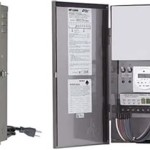Does Outdoor Lighting Affect Plant Growth?
Plants require light for photosynthesis, the process by which they convert sunlight into energy. While sunlight is the primary source of energy for most plants, artificial light sources, such as outdoor lighting, can also influence their growth and development. The impact of outdoor lighting on plant growth depends on various factors, including the type of light, the duration of exposure, and the specific plant species. This article explores the effects of outdoor lighting on plant growth, examining the benefits and drawbacks, as well as practical considerations for using artificial light sources in gardening.
Effects of Light Spectrum and Duration
The spectrum and duration of light exposure significantly impact plant growth. Different wavelengths of light influence various aspects of plant development, such as stem elongation, leaf production, and flowering. For instance, blue light promotes leaf growth and stem elongation, while red light encourages flowering and fruit production. Outdoor lighting, particularly those designed for aesthetics, often emit a mix of wavelengths, potentially influencing plant growth differently compared to natural sunlight.
The duration of light exposure also plays a critical role. Plants require specific periods of darkness for optimal growth. Disrupting this natural light-dark cycle, known as photoperiodism, can hinder plant development. Artificial lighting can extend the photoperiod, leading to excessive growth, delayed flowering, or even stunted development depending on the plant species and its specific light requirements.
Benefits of Outdoor Lighting for Plant Growth
Despite the potential drawbacks, outdoor lighting can benefit plant growth in certain situations. For instance, in areas with limited sunlight, such as shaded gardens or during winter months, supplementary lighting can provide essential light energy for photosynthesis, enhancing growth. Additionally, specialized grow lights with specific wavelengths, such as red and blue light combinations, can be used to promote specific stages of plant development, such as flowering or fruit production.
Furthermore, outdoor lighting can improve the aesthetics of gardens and landscapes, extending the usable hours and enjoying the beauty of plants beyond daylight. By illuminating specific plants or areas, homeowners can create visual focal points and enhance the overall ambiance of their outdoor spaces. However, it is essential to use lighting carefully and avoid excessive brightness that can disrupt plant growth and nocturnal wildlife.
Potential Drawbacks of Outdoor Lighting for Plant Growth
While outdoor lighting can provide benefits, it is essential to acknowledge its potential downsides. Overexposure to artificial light at night can disrupt the natural light-dark cycle, leading to stress and reduced growth in some plants. This disruption can also affect the plant's flowering and fruit production, as certain species require specific periods of darkness to trigger these processes.
Another concern is the potential for light pollution, which can negatively impact nocturnal organisms, including insects and other wildlife. The artificial light can disorient or attract these creatures, interfering with their natural behaviors and habitats. Therefore, using outdoor lighting responsibly and choosing light sources with reduced light pollution is crucial to minimize these environmental impacts.
Practical Considerations for Using Outdoor Lighting
When using outdoor lighting for plants, several practical considerations are essential for achieving optimal benefits while minimizing potential risks. Choosing the right type of light source, such as LED grow lights with specific wavelengths, can provide adequate light for plant growth while minimizing energy consumption and light pollution. Additionally, using timers or motion sensors to limit the duration of light exposure at night is crucial for maintaining the natural photoperiod and minimizing potential disturbances to plant growth and wildlife.
Furthermore, understanding the specific light requirements of the plants in your garden is essential for selecting the right type and amount of light to provide. Consulting gardening resources or contacting local experts can provide valuable insights into individual plant needs and help you choose the best lighting solution for your specific needs and plant varieties.

Does Landscape Lighting Affect Plant Growth Yardyum Garden Plot Als

How Light Affects Plant Growth What You Need To Know Trees Com
/arc-anglerfish-arc2-prod-pmn.s3.amazonaws.com/public/CU4IHWK5G5GZVIZYAISQJJ332Y.jpg?strip=all)
Ask Jennifer Adams Does Ornamental Lighting Affect Plant Growth

March Phenomenon Light Vs Darkness Center For Stem Education

How Does The Light Effect Plant Growth Lighting Equipment S

Effects Of Light Quality On Plant Growth Atop Lighting

Green Light Is It Important For Plant Growth Msu Extension

Experiment Red Light Vs Blue How Spectrums Affect Plant Growth Led Cfl

Can Plants Grow With Artificial Light

The Most Comprehensive Information About Effect Of All Kinds Colour Light On Plants Atop Led Grow Agc Lighting
Related Posts







